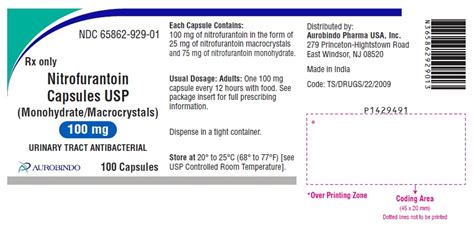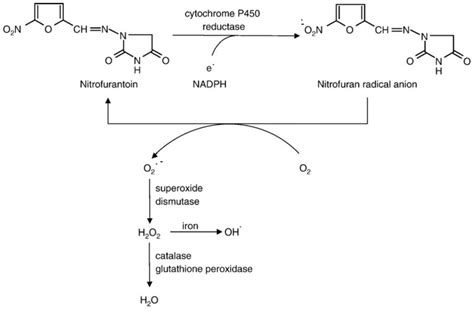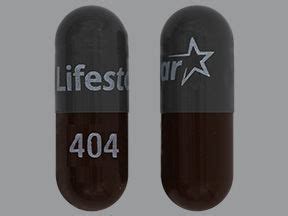Intro
Discover key facts about Nitrofurantoin Mono, a common antibiotic for UTI treatment, including its uses, side effects, and interactions, to better understand this medication and its role in urinary tract infection management.
The world of antibiotics is vast and complex, with various medications designed to combat different types of bacterial infections. One such antibiotic that has been widely used for several decades is Nitrofurantoin mono, known for its effectiveness against urinary tract infections (UTIs). Understanding the properties, uses, and side effects of Nitrofurantoin mono is crucial for both medical professionals and patients alike. Here, we delve into five key facts about Nitrofurantoin mono, exploring its mechanism of action, benefits, potential side effects, and more.
Nitrofurantoin mono, or Nitrofurantoin monohydrate, is a synthetic antimicrobial agent that belongs to the class of nitrofuran antibiotics. It is specifically designed to target and eliminate bacteria that cause UTIs, making it a first-line treatment for many patients suffering from these infections. The drug works by damaging the bacterial DNA, thereby inhibiting the growth and multiplication of the bacteria, which eventually leads to their death.
Introduction to Nitrofurantoin Mono

The introduction of Nitrofurantoin mono into the medical world marked a significant advancement in the treatment of UTIs. Its ability to concentrate in the urine, reaching levels that are much higher than in the blood, makes it particularly effective against pathogens that reside in the urinary tract. This unique property reduces the risk of systemic side effects, as the drug primarily acts locally within the urinary system.
Benefits of Nitrofurantoin Mono

One of the significant benefits of Nitrofurantoin mono is its narrow spectrum of activity, which means it targets a specific range of bacteria without affecting the broader microbial flora of the body. This targeted approach helps in preserving the body's natural balance of microbes, reducing the risk of developing antibiotic-resistant bacteria. Moreover, Nitrofurantoin mono is generally well-tolerated, with most patients experiencing minimal side effects when used as directed.
Common Uses of Nitrofurantoin Mono
Nitrofurantoin mono is primarily used for the treatment of acute uncomplicated urinary tract infections, including cystitis (infection of the bladder) and pyelonephritis (infection of the kidney). It can also be prescribed for the prevention of recurrent UTIs in patients who experience frequent infections. The drug's efficacy against a wide range of gram-negative and gram-positive bacteria makes it a versatile option for managing various types of UTIs.Side Effects and Precautions

While Nitrofurantoin mono is generally safe, it can cause side effects in some patients. Common side effects include nausea, vomiting, diarrhea, and abdominal pain. More severe but less common side effects can include pulmonary reactions, hepatotoxicity, and neuropathy. Patients with certain medical conditions, such as kidney disease or pulmonary disease, should use Nitrofurantoin mono with caution and under close medical supervision.
Interactions with Other Medications
Nitrofurantoin mono can interact with other medications, either enhancing or reducing their effects. For example, it can increase the effects of blood thinners, and its effectiveness may be reduced by certain antacids or sulfinpyrazone. It's crucial for patients to inform their healthcare provider about all the medications they are taking before starting Nitrofurantoin mono.Resistance and Future Perspectives

The rise of antibiotic resistance poses a significant challenge to the effectiveness of Nitrofurantoin mono and other antibiotics. As bacteria evolve mechanisms to evade the drug's effects, the development of new antibiotics and strategies to combat resistance becomes increasingly important. Future perspectives may include the development of combination therapies or novel compounds that can overcome existing resistance mechanisms.
Public Awareness and Education
Public awareness and education about the proper use of antibiotics, including Nitrofurantoin mono, are critical in the fight against antibiotic resistance. Patients should be informed about the importance of completing the full course of treatment as prescribed, even if symptoms improve before finishing the medication, and the dangers of sharing or saving antibiotics for later use.Conclusion and Next Steps

In conclusion, Nitrofurantoin mono remains a valuable antibiotic in the treatment of urinary tract infections, offering a targeted and generally well-tolerated approach to managing these common infections. As the medical community continues to navigate the challenges of antibiotic resistance, ongoing research and public education will be key in ensuring the long-term effectiveness of Nitrofurantoin mono and other antimicrobial agents.
We invite readers to share their thoughts and experiences with Nitrofurantoin mono, and to consider the broader implications of antibiotic use and resistance. By engaging in this conversation, we can work together towards a future where effective treatments for UTIs and other bacterial infections remain available for generations to come.
What is Nitrofurantoin mono used for?
+Nitrofurantoin mono is primarily used for the treatment of acute uncomplicated urinary tract infections, including cystitis and pyelonephritis.
How does Nitrofurantoin mono work?
+Nitrofurantoin mono works by damaging the bacterial DNA, thereby inhibiting the growth and multiplication of the bacteria, which eventually leads to their death.
What are the common side effects of Nitrofurantoin mono?
+Common side effects of Nitrofurantoin mono include nausea, vomiting, diarrhea, and abdominal pain. More severe side effects can include pulmonary reactions, hepatotoxicity, and neuropathy.
